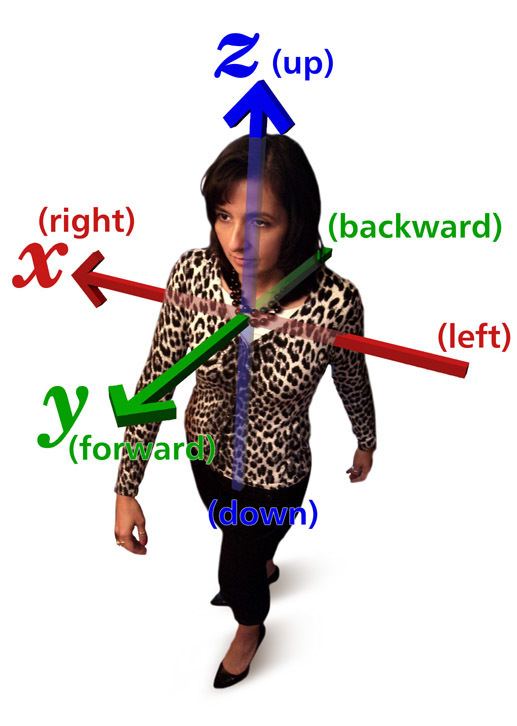Understanding relative direction within human geography transcends mere cartographic readings; it encapsulates cultural perceptions and socio-political contexts that shape how individuals navigate their world. Relative direction reflects the locational orientation of places in relation to one another, often influenced by human interactions, historical narratives, and social constructs. It is an essential concept that highlights both the spatial relationships and the inherent meanings tied to geographical positioning.
The term “relative direction” diverges from cardinal or absolute directions, which are fixed and universally recognized (north, south, east, west). Instead, relative direction refers to how individuals relate to their surroundings based on their own position and cultural context. For instance, a city may be described as being “downriver” or “uphill” from another, utilizing context-specific language to communicate spatial relationships. This method of orientation often varies across cultures, as different societies employ distinct terminologies to express their pathways, leading to a rich tapestry of spatial understanding.
One notable aspect of relative direction is its inherent subjectivity. Whereas absolute direction is anchored in physical geography, relative direction is imbued with personal experience. Consider how urban-dwellers might describe navigating their neighborhoods. For them, the local café might be “near the park,” or the school might be “across from the library.” These descriptors are steeped in shared knowledge, facilitating communication that reflects cultural and communal bonds. Such variables enhance the complexity of geographical understanding, underscoring the importance of community and environmental context.
Moreover, relative direction can serve as a window into historical and socio-economic dynamics. Spatial orientations can reflect the changing power structures of cities or regions. For instance, a neighborhood traditionally deemed as “unsafe” may shift in its characterization as gentrification occurs, waypoints transforming their significance in the collective psyche. Historically, places notorious for their adverse conditions can develop a reputation that bears weight long after the physical reality has changed. As such, relative direction is enriched by the fluid interactions of culture, history, and economics.
The implications of relative direction extend into urban planning and development. Planners utilize knowledge of relative orientations to shape sustainable and equitable environments. For example, understanding how communities perceive distance and direction can inform transit systems, making navigation intuitive and promoting accessibility. If certain neighborhoods are described as “far” from essential services, planners can critically assess infrastructural disparities. This comprehension of relative positioning aids in reinforcing the principles of inclusivity and community engagement, facets essential for environmentally conscious urban growth.
Furthermore, relative direction intertwines with human behavior as individuals navigate their surroundings. Cognitive maps — the mental representations people create to understand their environments — often rely heavily on relative positions. These maps are subjective, shaped by personal experiences and the social fabric of a given area. They reveal how individuals prioritize landmarks, streets, and neighborhoods based on their lived experiences and cultural backgrounds. Psychologically, these perceptions can influence how effectively individuals connect to their environments, potentially impacting wellbeing and social cohesion.
It is equally pertinent to consider the role of technology in shaping perceptions of relative direction. With the proliferation of GPS and digital mapping technologies, individuals can easily negotiate complex urban landscapes. However, this convenience may also distort traditional cognitive maps, leading to a reliance on technology rather than an intrinsic understanding of spatial relationships. As people become increasingly accustomed to digital navigational aids, there exists a risk of losing the nuanced knowledge derived from experiential learning, which has characterized human orientation for centuries.
A particularly fascinating element lies in how regional and cultural distinctions contribute to relative directionality. Indigenous cultures often possess rich geographical knowledge—an integration of ecological awareness and cultural narratives—that defines relative direction in ways that resonate with their unique perspectives. For example, many Indigenous maps spotlight relationships with the land and natural resources, delineating not just navigational pathways but connections that denote historical and spiritual significance. These alternate perspectives invite deeper reflection on how relative directionality can encapsulate human experience beyond mere travel or measurements.
In summation, relative direction in human geography offers a compelling lens through which to explore the multidimensional interplay between people and their environments. This concept illuminates the subjective nature of spatial perceptions, influenced by cultural frameworks, historical narratives, and technological advancements. The implications for urban planning, social behavior, and cognitive mapping underscore the essentiality of recognizing how human experience shapes geographical understanding.
As society moves towards an increasingly interconnected yet differentiated landscape, embracing the concept of relative direction becomes fundamental. Acknowledging the interplay of culture, history, and personal perceptions fosters a more inclusive and sustainable approach to navigating our environments. In essence, relative direction is not only about finding one’s way; it is an intricate dance of human experience and geographical relationships, a reminder of the complexities that lie within our spatial existences.
